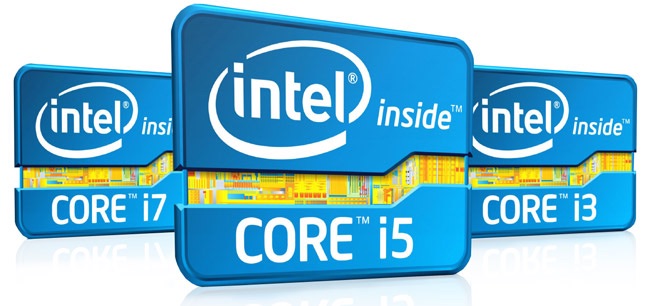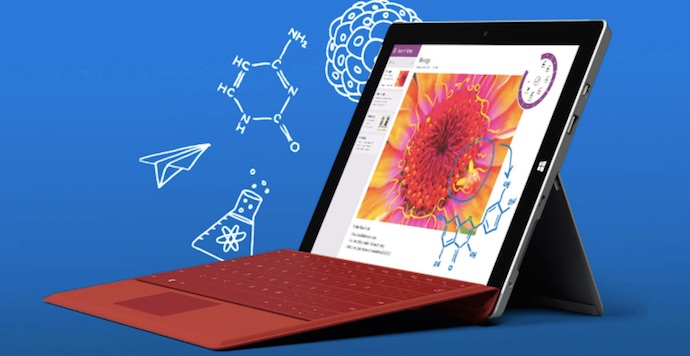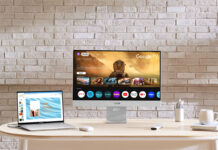
A few weeks back I explored the topic of whether a tablet could be as good as a laptop for students. Here’s a hint (as a father whose kids have used both in class): yes, in many cases a tablet can be. However, I also know from experience that there are situations where a laptop just makes more sense. If you’re a student or you have kids in school, here’s the case for buying a traditional laptop over alternatives like a tablet or a desktop PC.
Portability
The number one reason why a student would choose a laptop over a desktop PC is a no brainer: it’s portable. All-in-One computers are excellent for use in a dorm room if you want a PC that’s a productivity and entertainment hub, but to save even more space, a laptop can’t be beat. And unlike any desktop PC or AiO, you can scoop up the laptop and take it with you—display, power supply, keyboard and all.
Power
Alternatives to a traditional laptop such as a tablet or a Chromebook lack the computing muscle of a traditional laptop. They typically use mobile CPUs that are fine for casual use, but not meant for heavy duty applications.
Inside a Windows laptop or an Apple MacBook Pro, you’ll find an Intel Core CPU. In many cases the processors in a laptop can give a desktop PC a run for its money in terms of raw computing power. To see a good example of this, have a look at a gaming laptop like the HP OMEN sporting a quad-core Intel Core i7 CPU. This is a computer that thrives on processor-intensive tasks.

And sometimes students need the power. If you are enrolled in an engineering program where you need to render and manipulate three dimensional objects, or a film course where editing 4K video is a requirement, you’ll need the power advantage of a traditional laptop. The same thing if you are taking accounting courses and working with huge Excel spreadsheets, or compiling research results that means crunching terabytes of data. A student that needs this kind of power in a portable device really needs a traditional laptop.
Software Availability
Another reason to choose a traditional laptop over the less expensive tablet or Chromebook option is when a student takes courses that require specialized software.
General purpose stuff like writing essays, reports or presentations usually means Microsoft Office, and that’s fine for the lighter duty gear. Microsoft offers mobile app versions of its Office suite, so tablet owners are covered and Chromebooks can open Office files and save them back to Office formats using Google’s apps.
However, there are thousands of more specialized software packages that do not offer mobile app equivalents. Whether they require more power, a bigger display or the publisher simply sees no commercial advantage to re-writing code for tablets, there are many programs that are PC only. So if you want to run this software and don’t want to be tied to a desk, you’ll need a laptop.
Post-secondary students are the most likely to run into the need to run these specialized software packages, but as high schools increasingly offer more technical courses like robotics, game design and video production, it’s possible that a high school student may also need a laptop.
Expansion and Peripherals
Here’s a category where a traditional laptop will run circles around a tablet and Chromebook.

The majority of PC accessories are designed with PCs in mind. You’ll need a USB port to connect them (and sometimes provide their operating power), you need software drivers to interact with them and in the case of a monitor you need video output to drive them. Yes, some accessories play nicely with tablets, especially Bluetooth accessories like keyboards. Some printers will let tablets connect wirelessly to send print jobs.
However, if a student will be taking courses that depend highly on accessories (like a graphics tablet or a 3D printer, for example), a traditional laptop is far more likely to be compatible with them than either a tablet or Chromebook.
Upgradability
Have you ever tried to upgrade the RAM in a tablet? How about replacing the built-in Flash storage with a higher capacity chip? Yeah, that doesn’t work so well. The configuration you bought is pretty much the configuration you’ll always have. You can’t boost the specs at all if it starts feeling sluggish after next year’s operating system upgrade.
A traditional laptop isn’t exactly the poster child for upgrades—at least compared to a desktop PC—but there are still key components you can replace to breath new life into these portable PCs. RAM is usually easy to upgrade (unless you pick a model where it’s soldered, like the MacBook Air), while storage can be boosted and often sped up by popping in a new SSD.
The Surface Question
Microsoft’s Surface and Surface Pro tablets are really 2-in-1 convertible laptops when you kit them out with an optional Type Cover. They are definitely worth considering for the student who needs a traditional laptop, since they run Windows 10, can run Windows software and offer expansion ports for connecting accessories.

On the downside, the Surface 3 uses an Intel Atom chip that’s not as powerful as the CPU in most traditional laptops, the displays of both the Surface 3 and Surface Pro 3 are smaller than many laptops and while the Touch Type keyboard is good, it’s still not quite on par with many laptop keyboards.
Expandability and built-in storage capacity (the Surface 3 maxes out at 128GB) may also be an issue. If you’re considering a Surface tablet instead of a traditional laptop for use in a post-secondary program, I’d suggest you check the required software for courses and pay attention to minimum specs to avoid disappointment.
Basically what it boils down to is this: if your student needs portability, power and specialized software or accessories, a traditional laptop should be at the top of their back to school list. Speaking of which, don’t forget to check out Plug-in’s extensive collection of back to school-themed articles including must-have laptop accessories (you’ll want to read that one if you are leaning towards a laptop for school), the best bar fridges for students heading off to school, and a comprehensive back to school checklist.




If you are a novice computer user… the portability is a plus when you need to bring the machine to a friend or Geek Squad for technical support.
One thing I recently discovered that’s great for laptop expandability is a second monitor. You can get a conventional monitor, but I also discovered USB monitors that gets a signal and power from one or two ports. No 120v outlet needed. Great for hotel rooms when you need to be mobile.
Yes, I use an 11-inch laptop, which has all the power I need (Core i7, etc…) and is awesome on the go, but it would kill me to actually use that wee display all day, so it’s hooked up to a 27-inch monitor. USB-powered monitor is interesting, never seen one of those. If you happen to carry a tablet around too, there are apps that let you use the tablet as a second screen, and that wouldn’t drain your lkaptop battery…
Some newer USB monitors look like regular monitors. My fav is the ASUS MB168B+ for 1080 resolution.
https://www.youtube.com/results?search_query=asus+mb168b%2B
It looks like an oversized tablet, but I have space in my car on a roadtrip for it. Works great at the hotel room as a second monitor. So portable!
Being so successful with USB monitors, I also got the GeChic 1502i to experiment with. Images are not as good as the ASUS, requires two cables, but it offers a speaker and HDMI connections.
https://www.youtube.com/results?search_query=gechic+1502i
Just noticed you can get a similar USB monitor from Best Buy…
http://www.bestbuy.ca/en-CA/product/aoc-aoc-15-6-widescreen-portable-usb-led-monitor-e1649fwu-glossy-black-e1649fwu/10191474.aspx
This is very good to know —thanks for pointing these out!
Comments are closed.